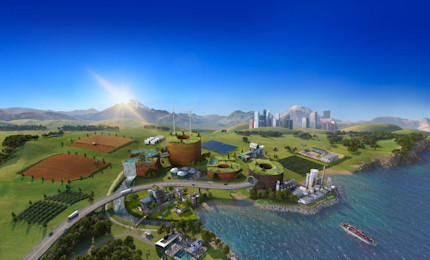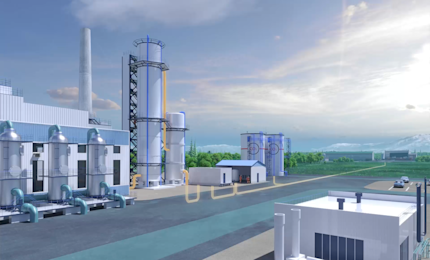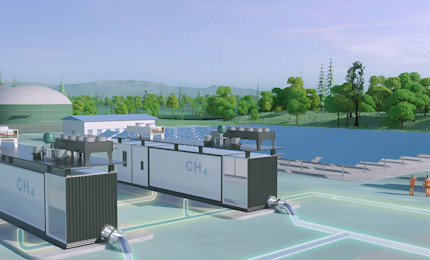Urgence gaz 0 800 028 800

Hydrogen, an energy for the future
Among the energies of the future, carbon-free hydrogen is a promising energy carrier, both economically and environmentally, and one of the viable alternatives to fossil fuels. It offers solutions perfectly aligned with the objectives of achieving carbon neutrality set by the Paris Agreement and the National Low-Carbon Strategy (SNBC) by 2050.
In fact, decarbonising industrial uses and processes is an essential step that requires a profound transformation of our industry and our modes of transport via a change in the energy sector.
As an energy carrier, decarbonised hydrogen can be used to store and transport renewable energy, power vehicles and decarbonise industrial processes. Hydrogen’s versatility and ability to be used in multi-energy systems make it a central pillar of the energy transition. It stands out specifically in areas where other renewable energies are less suitable, such as heavy mobility or certain industrial processes. Hydrogen can also be combined with other energies, enabling them to be harnessed to promote multi-energy ecosystems, which are essential if we are to achieve our carbon neutrality targets.
Teréga is actively involved in the development of the hydrogen industry in France and Europe. By leveraging its infrastructure and expertise, the Group supports industrial initiatives and mobility projects, playing a key role in the energy transition.
Why this dedicated hydrogen educational platform?
The “Hydrogen Objective” educational platform has been designed to provide an in-depth and accessible overview of the future of hydrogen and its many applications. The different levels of information make it possible to address all audiences, whether experts or not.
It provides a better understanding of how hydrogen can contribute to decarbonisation, the reindustrialisation of regions and the transformation of mobility, while highlighting the challenges associated with this energy.
Themes to discover step by step
Hydrogen basics: for understanding in detail how the molecule is produced, stored and used.
Industrial application: presenting how H2 is integrated into industrial sectors through case studies and concrete examples of projects.
Decarbonised mobility: understanding the various infrastructure options available to support hydrogen-powered vehicles and the transformation of public and private transport.
Reindustrialisation and territories: to seize economic opportunities that support the local energy transition and regional initiatives such as development projects that use hydrogen to revitalise industry.
Multi-energy: in favour of H2-CO2 synergies for the creation of synthetic methane in order to discern the multiple decarbonised solutions as alternatives to the uses of natural gas.
Technological progress and innovation: find out about current innovations and hydrogen research aimed at building the future of this energy carrier.
At the core of the action
“Hydrogen Objective” takes an educational approach in the form of an interactive and instructive journey. It offers a variety of educational formats, such as explanatory videos, interactive graphics and simulations that make it easier to understand, share and discuss these complex subjects. This immersive user experience enables the platform to encourage active participation in the energy transition.
À lire aussi

Discover the “2050: a world of renewable, low-carbon energy” platform
To combat global warming while meeting our needs, there are renewable energies. The aim of the “2050: a world of renewable, low-carbon energy” educational platform is to find out more about these energies and understand how they can help meet the challenges of climate change and bring about a new energy era.

Discover the “CCUS Zero CO2 objective” platform
This interactive site presents CCUS (Carbon Capture, Utilisation and Storage) solutions, processes that complement the new energies of the future, whether through the possible synergy with hydrogen or the treatment of CO2 waste.

Discover the “Biomethane Objective” platform
La plateforme pédagogique « Objectif Biométhane » offre une connaissance approfondie du biométhane comme solution de décarbonation et de développement des territoires via une production décentralisée, une valorisation des matières et infrastructures gazières locales mais aussi grâce aux synergies possibles avec l’hydrogène.





